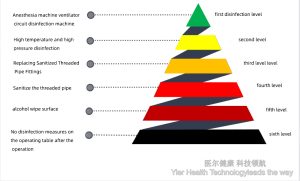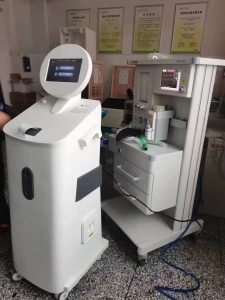In the field of healthcare, maintaining a high level of disinfection is of utmost importance to ensure patient safety and prevent the spread of infections. High-level disinfection refers to the process of effectively eliminating or inactivating microorganisms, including bacteria, viruses, and fungi, on surfaces, instruments, and medical devices. By reducing the risk of cross-contamination and the transmission of pathogens, high-level disinfection plays a crucial role in safeguarding the health and well-being of patients and healthcare professionals.

The Significance of High-Level Disinfection
High-level disinfection is essential for several reasons. Firstly, it helps prevent healthcare-associated infections (HAIs), which are infections acquired during the course of receiving medical treatment. HAIs pose a significant risk to patients, leading to prolonged hospital stays, increased healthcare costs, and in severe cases, even death. Implementing rigorous disinfection protocols minimizes the likelihood of HAIs and promotes better patient outcomes.
Secondly, high-level disinfection is particularly vital in environments such as hospitals, clinics, and outpatient facilities, where vulnerable individuals with compromised immune systems may come into contact with various pathogens. These individuals, including the elderly, newborns, and individuals undergoing chemotherapy, are more susceptible to infections. By ensuring high-level disinfection, healthcare facilities create a safer environment for these at-risk patients.

Achieving High-Level Disinfection
To achieve high-level disinfection, healthcare facilities employ a combination of rigorous protocols, standardized procedures, and advanced disinfection technologies. The process typically involves several steps:
-
- Thorough Cleaning: Before disinfection can occur, surfaces and medical instruments must undergo thorough cleaning to remove any visible debris, organic material, or contaminants. Cleaning ensures that disinfectants can effectively target and eliminate microorganisms.
- Selection of Appropriate Disinfectants: Different disinfectants have varying efficacy against specific pathogens. Healthcare facilities must carefully choose disinfectants that are suitable for the intended use, taking into account factors such as contact time, compatibility with the materials being disinfected, and the spectrum of microorganisms they can eliminate.
- Proper Disinfection Techniques: Following manufacturer instructions, healthcare professionals should apply disinfectants correctly, considering factors such as concentration, exposure time, and application methods. Adhering to standardized protocols helps ensure consistent and effective disinfection.
- Validation and Monitoring: It is crucial to regularly validate the efficacy of disinfection processes and monitor compliance with protocols. This may involve microbial testing, use of chemical indicators, and periodic audits to verify that disinfection procedures are consistently achieving the desired level of pathogen elimination.
In conclusion, high-level disinfection plays a vital role in the medical field by protecting patients and healthcare professionals from the risks of infections. By implementing robust disinfection practices, healthcare facilities can effectively reduce the transmission of pathogens, minimize the occurrence of healthcare-associated infections, and enhance patient safety. Maintaining a high standard of disinfection should be a top priority in healthcare settings to ensure the well-being of all individuals who seek medical care.